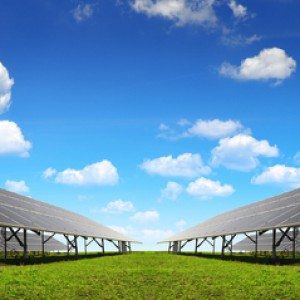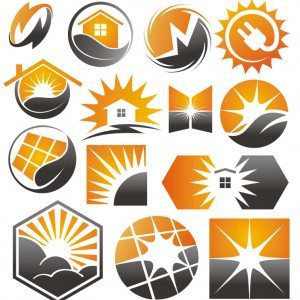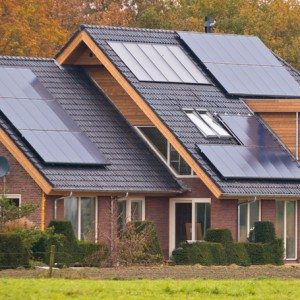 Whether you’re considering a solar panel system for your home or you already have one installed, you may have wondered how well it will work on days when there isn’t bright sun or there’s particularly inclement weather. It’s actually a very reasonable inquiry, as most people think of solar panels as functioning ideally in bright sunlight, which is not necessarily available continuously or even for a majority of the day in all geographic areas. In certain regions, at certain times of the year, such as the far north in winter, the sun may set in the late afternoon and not rise again until well into the next morning.
Whether you’re considering a solar panel system for your home or you already have one installed, you may have wondered how well it will work on days when there isn’t bright sun or there’s particularly inclement weather. It’s actually a very reasonable inquiry, as most people think of solar panels as functioning ideally in bright sunlight, which is not necessarily available continuously or even for a majority of the day in all geographic areas. In certain regions, at certain times of the year, such as the far north in winter, the sun may set in the late afternoon and not rise again until well into the next morning.
- Home
- Residential
- Commercial
- Tesla
- Testimonials
- About Us
- Contact Us
Category: Solar Panels
 Whether you’re considering a solar panel system for your home or you already have one installed, you may have wondered how well it will work on days when there isn’t bright sun or there’s particularly inclement weather. It’s actually a very reasonable inquiry, as most people think of solar panels as functioning ideally in bright sunlight, which is not necessarily available continuously or even for a majority of the day in all geographic areas. In certain regions, at certain times of the year, such as the far north in winter, the sun may set in the late afternoon and not rise again until well into the next morning.
Whether you’re considering a solar panel system for your home or you already have one installed, you may have wondered how well it will work on days when there isn’t bright sun or there’s particularly inclement weather. It’s actually a very reasonable inquiry, as most people think of solar panels as functioning ideally in bright sunlight, which is not necessarily available continuously or even for a majority of the day in all geographic areas. In certain regions, at certain times of the year, such as the far north in winter, the sun may set in the late afternoon and not rise again until well into the next morning.
Why Switching to solar panels makes sense
Written by goldensolar on . Posted in Solar Panels, Solar Power. Leave a Comment
 If you’ve been thinking about ways to save money on your home utility bills every month, the time may be right to work with a local company to convert your residence to solar power. By now, you’re probably aware that solar panels can save you money over standard electric bills, which have been increasing for the last 20 years at a national average of more than 5 percent per year. Studies show that in a 2,000 square-foot home, standard savings can be at least $25,000 over a 10 year period.
Not only can you realize a savings on your bills by going with solar, but you can possibly qualify for federal, state and/or local tax rebates and incentives that will save you even more money. Federal solar tax credits are still available through the end of 2016.
In addition to savings from government, some power companies offer rebates or credit for excess power sent back to them from consumers’ systems. You can check with your local utility company to see if this is the case for your area.
Solar power can lower your bills as well as create an ecologically-sustainable energy source for your home. That means less energy needs to be produced by local energy providers, which helps keep pollution out of the environment. That makes sense for your local region and the global community at large.
If you’ve been thinking about ways to save money on your home utility bills every month, the time may be right to work with a local company to convert your residence to solar power. By now, you’re probably aware that solar panels can save you money over standard electric bills, which have been increasing for the last 20 years at a national average of more than 5 percent per year. Studies show that in a 2,000 square-foot home, standard savings can be at least $25,000 over a 10 year period.
Not only can you realize a savings on your bills by going with solar, but you can possibly qualify for federal, state and/or local tax rebates and incentives that will save you even more money. Federal solar tax credits are still available through the end of 2016.
In addition to savings from government, some power companies offer rebates or credit for excess power sent back to them from consumers’ systems. You can check with your local utility company to see if this is the case for your area.
Solar power can lower your bills as well as create an ecologically-sustainable energy source for your home. That means less energy needs to be produced by local energy providers, which helps keep pollution out of the environment. That makes sense for your local region and the global community at large.
You may be thinking all of this sounds great, but what about the costs?
Now there are solar companies that will lease solar panel systems to you instead of you having to purchase them. Why lease a system? There are several reasons. First of all, purchasing a solar panel system and installing it is a huge upfront investment few homeowners can afford. Even if you can afford the initial cost, maintenance and repairs are usually the responsibility of the homeowner. Now, solar panel companies exist that will do the installationFirst Solar Panels Likely To Surpass p-type Crystallin Panels in performance by 2017
Written by goldensolar on . Posted in Solar Panels, Solar Power. Leave a Comment
 Solar panels have continued to improve in capacity, effectiveness and size since their early inception. While capacity and effectiveness remain top priorities for researchers and manufacturers alike, the ability to improve these elements while reducing the size and weight of the panels themselves remains important. Not only does this enable lower production and shipping costs, but it also increases the number of places where solar panels can be utilized safely and efficiently. One company that is continuing to make strides forward in this area is First Solar.
First Solar is a sector leader in thin film solar technology. Their existing panels are believed to be already outperforming multi-crystalline solar panels; being able to produce around 8% more energy on an annual basis. The effect of this improvement can be felt consumers in both the commercial and private sectors, with lower costs for you, the end user, including in relation to solar panel installation. However, the caveat at the moment is that this improved performance is only seen at temperatures higher than 25 °C.
Despite this, it is still understood that by the end of 2017, First Solar’s Cadmium Telluride thin film panels will consistently produce more power and generally perform better than p-type crystalline solar panels of comparable size. Understanding the importance of this step forward begins with understanding the difference between the two type of solar panels:
Solar panels have continued to improve in capacity, effectiveness and size since their early inception. While capacity and effectiveness remain top priorities for researchers and manufacturers alike, the ability to improve these elements while reducing the size and weight of the panels themselves remains important. Not only does this enable lower production and shipping costs, but it also increases the number of places where solar panels can be utilized safely and efficiently. One company that is continuing to make strides forward in this area is First Solar.
First Solar is a sector leader in thin film solar technology. Their existing panels are believed to be already outperforming multi-crystalline solar panels; being able to produce around 8% more energy on an annual basis. The effect of this improvement can be felt consumers in both the commercial and private sectors, with lower costs for you, the end user, including in relation to solar panel installation. However, the caveat at the moment is that this improved performance is only seen at temperatures higher than 25 °C.
Despite this, it is still understood that by the end of 2017, First Solar’s Cadmium Telluride thin film panels will consistently produce more power and generally perform better than p-type crystalline solar panels of comparable size. Understanding the importance of this step forward begins with understanding the difference between the two type of solar panels:
- A p-type multi-crystalline solar panel is comprised of raw silicon that has been melted and poured into molds; it is cost efficient when compared to monocrystalline products and produces less waste silicon in the manufacturing process. However, the efficiency of this solar power system means that large areas need to be covered to gain real advantage from solar energy.
- Using Cadmium Telluride in solar panels is highly cost efficient, due in part to the lower cost of the raw materials. Older versions of these panels were less effective than their crystalline counterparts and, therefore, more of them were needed for the same energy creation, which negated the initial cost savings. However, if the Cadmium Telluride thin film panels produced by First Solar can overcome this, then the way is open for them to become market leaders.
Comparing Energy Output
One of the major difficulties in comparing the energy output of the two types of solar panels is that they are manufactured in different sizes, and, therefore, are of different wattages; during the comparison, care needs to be taken to ensure that size as well as wattage and energy creation is taken into consideration. For example, an increase of 280 to 290 Watts is required for the First Solar panel system to have a higher power output than p-type multi-crystalline panels. It is believed that this will be achieved by the end of 2017. At the moment, just 6 crystalline solar panel manufacturers currently hold around 50% of the world market, and achieving the goal by the end of 2017 would allow First Solar to compete with the current dominant producers, namely in China.Creative solar installations
Written by goldensolar on . Posted in Solar Panels, Solar Power. Leave a Comment
 As the price of solar panels has dropped, solar power installations have grown in demand and have become more readily available to the public. The most common installations are, household photovoltaic (PV) systems, generally installed on rooftops or along the side of the house. However, as demand increases and more solar technologies enter the market, we are beginning to see more creative uses of solar panels. Here are a few examples that are expanding how we think about solar energy.
As the price of solar panels has dropped, solar power installations have grown in demand and have become more readily available to the public. The most common installations are, household photovoltaic (PV) systems, generally installed on rooftops or along the side of the house. However, as demand increases and more solar technologies enter the market, we are beginning to see more creative uses of solar panels. Here are a few examples that are expanding how we think about solar energy.
Water, as storage
A recently constructed housing development in Chiang Mai, Thailand, uses solar panels to power four family homes in the Phi Suea House development. The system is unique because it is the first known installation to use solar-powered hydrogen to store excess energy for use at night. The system will eventually generate about 441 kilowatt-hours of electricity during the day, and the excess energy will be stored in two lead-acid battery banks. The energy will be converted to hydrogen gas by an electrolyzer that applies an electrical current to water. The energy will be stored as gas and reconverted into electricity by fuel cells when the homes need more energy. This project is helping to expand how we think about energy storage, and is designed to be as ecologically friendly as possible; the only reported by-products of the system are oxygen and water.Solar-powered sports stadiums
Sporting events are far from carbon-neutral events, but some clubs around the world are trying to reduce their carbon footprint by developing solar-powered stadiums. The most impressive example comes from Taiwan, where the Dragon Stadium is powered completely by solar panels. The Dragon Stadium is a 40,000-seat facility that was built in 2009 for the World Games. It contains almost 9,000 rooftop solar panels, which generate enough power for over 3,000 lights and two giant screens. In the U.S., AT&T Park, home of baseball’s San Francisco Giants, has a 120-kilowatt array that powers the massive scoreboard in the outfield. The installation generates enough energy to light 40 family homes.Solar art
The sun has been a source of wonder and inspiration to humanity for centuries, and the recent developments in solar energy are driving a new wave of solar-inspired art. The first example also comes from the sports world. When the Washington, D.C., football team installed solar panels on the parking structures and main entrance at FedEx Field, they also installed a 30-foot “Solar Man” statue outside the stadium. Solar Man, primed and ready to throw the football, is constructed from thin-film solar panels that generate electricity for the stadium. The artist Sarah Hall has embraced another creative use of PV panels. Ms. Hall takes two panes of stained glass in a variety of textures, colors, and patterns, and installs a PV cell between the two panes. These windows can be fitted to any frame and the fun, colorful windows generate solar energy for the building they’re installed in.New IREA Charge for Solar Power Customers
Written by goldensolar on . Posted in Solar Panels, Solar Power. Leave a Comment
The Intermountain Rural Electric Association (IREA), Colorado’s largest rural energy co-op, recently announced that they will institute a new charge for residential customers using solar panels on their homes. The co-op serves about 145,000 customers spread across parts of Adams, Arapahoe, Douglas, Elbert, and Park counties, which accounts for a large swath of the Denver metropolitan area. The new charge is described as a form of demand charge and has significant implications for solar panel customers within the service area.
So, what exactly is this new charge? IREA describes it as a “Load Factor Adjustment (LFA)”, which is similar to demand charges that are commonly used with large users of electricity. Demand charges are often applied to large users of electricity, which mostly include commercial and industrial interests. Because these entities sometimes require additional energy for their operations, the electric utility must maintain the capacity to provide electricity to them at all times. Often, this requires the utility to maintain capacity above the base demand, which necessitates additional infrastructure and maintenance. Demand charges allow the utility to share the costs of this infrastructure with the companies that require the additional capacity.
The recently adopted LFA is designed to apply the principle of a demand charge to solar customers. Utilities across the country have been struggling to cover the costs of service as solar power gains popularity. Solar power customers usually have a low average power usage because the solar array is able to generate a large proportion of the home’s energy. However, when the panels are not producing sufficient electricity the homes require power from the grid. When this happens, usage levels spike nine or 10 times above their average levels. This spike can severely strain the utility’s infrastructure. The new LFA is designed to help cover the stand-by capacity the utility needs to meet peak power demand for its customers.
Unfortunately, many in the solar industry feel that the new charge is overly confusing and will limit the adoption of new solar systems beyond the end of the year. Because the LFA is a demand-based rate, it will be much more difficult for solar installers to accurately estimate cost savings for solar customers. Because the cost savings from solar are a major selling point for new customers, some industry experts believe the difficulty in describing the savings will negatively affect sales of solar panels in IREA’s service area.
The new charge is believed to be the first of its kind in the country and will be effective beginning on December 31, 2015. The charge could add between $20 and $24 to the monthly utility bill for IREA’s solar customers. IREA currently has about 650 solar customers, about two percent of the total customer base, but projections anticipate the number of solar systems to approach 1,000 by the end of 2015. The charge will apply to all new residential customers, but will mostly affect those who install solar panels after December 31.
The LFA is intended to help cover the costs of supplying electricity to solar customers at night, but is being interpreted by some as anti-solar. It will be interesting to see how the new charge affects new installations and if similar charges are adopted by other utilities both in Colorado and around the country.










